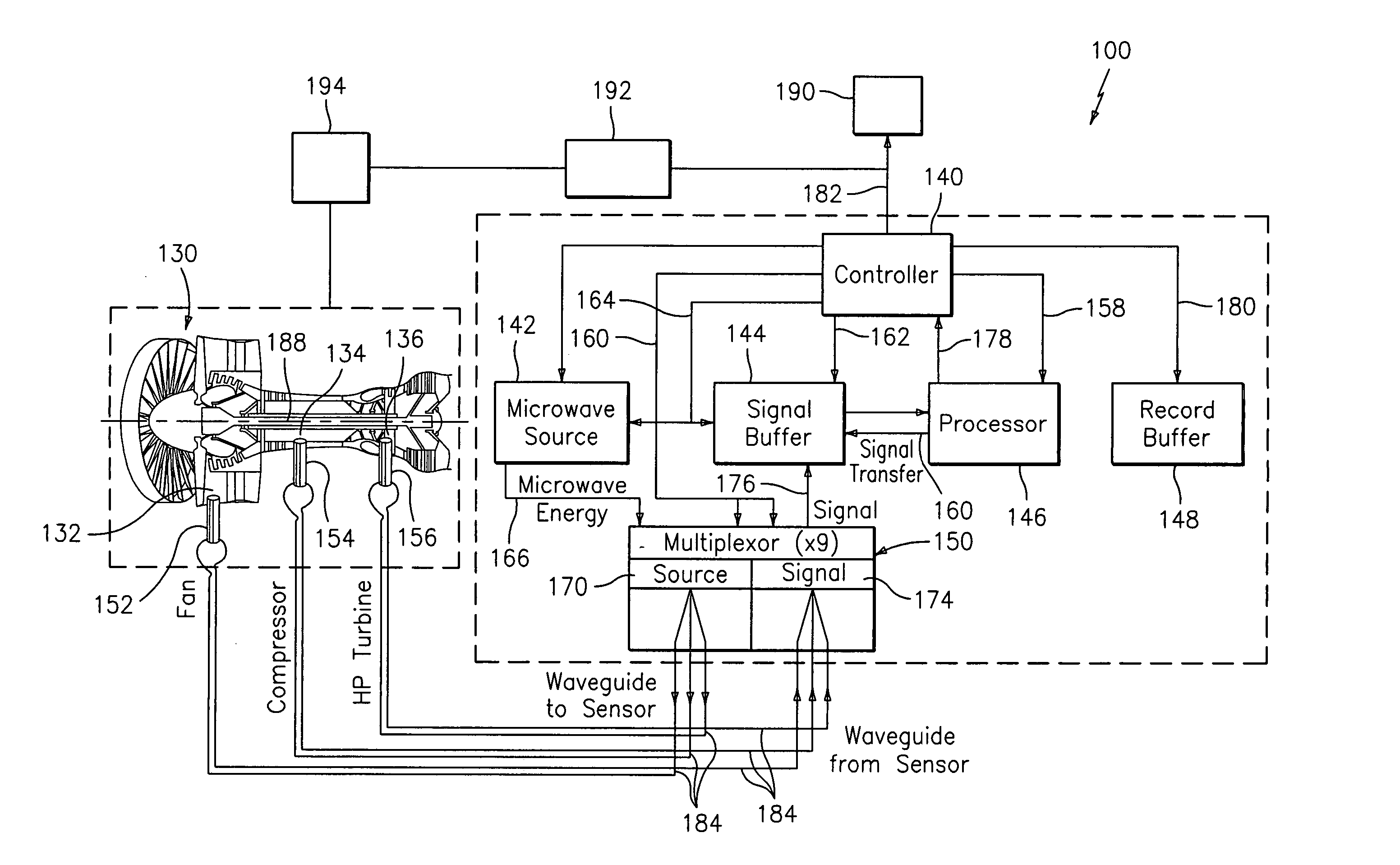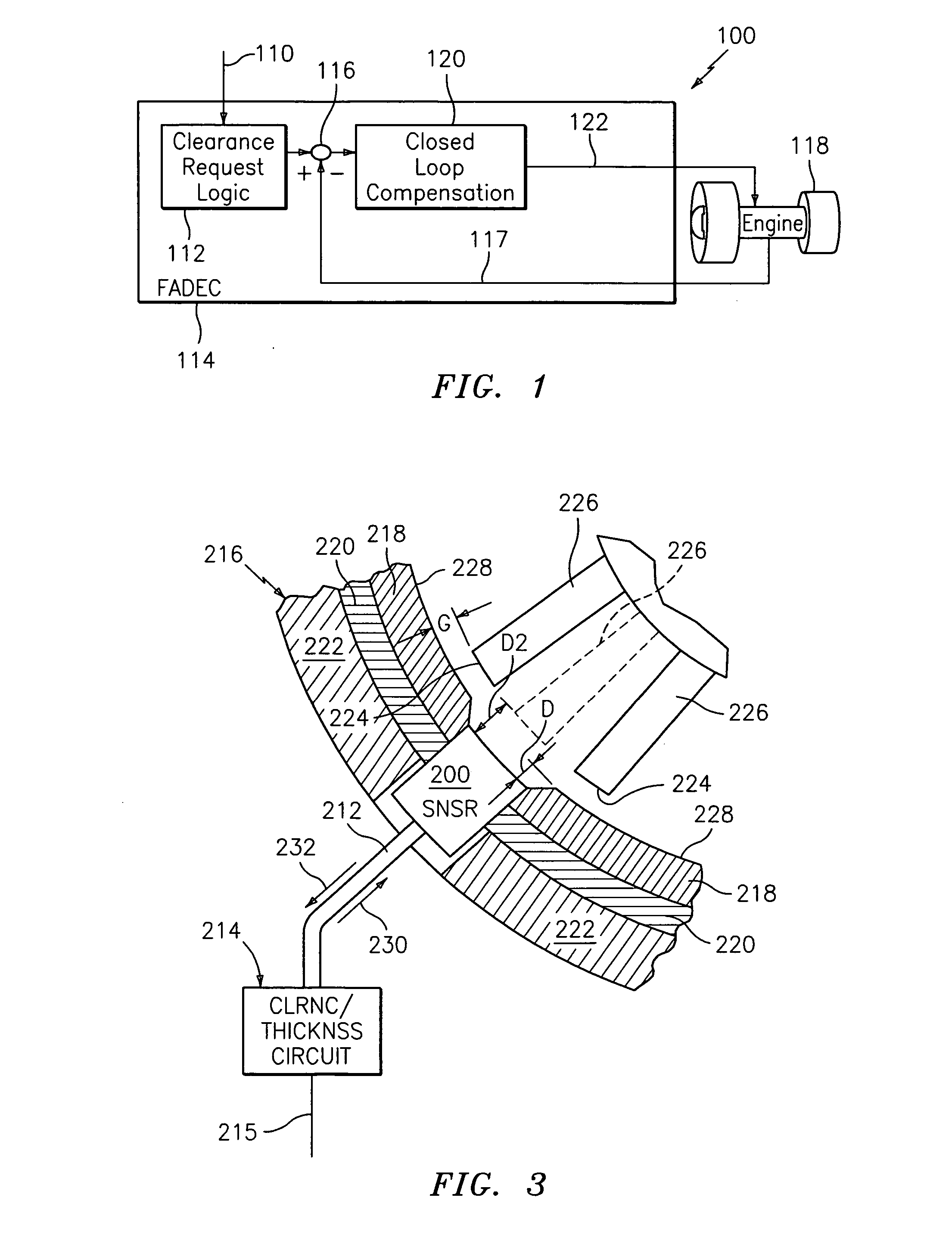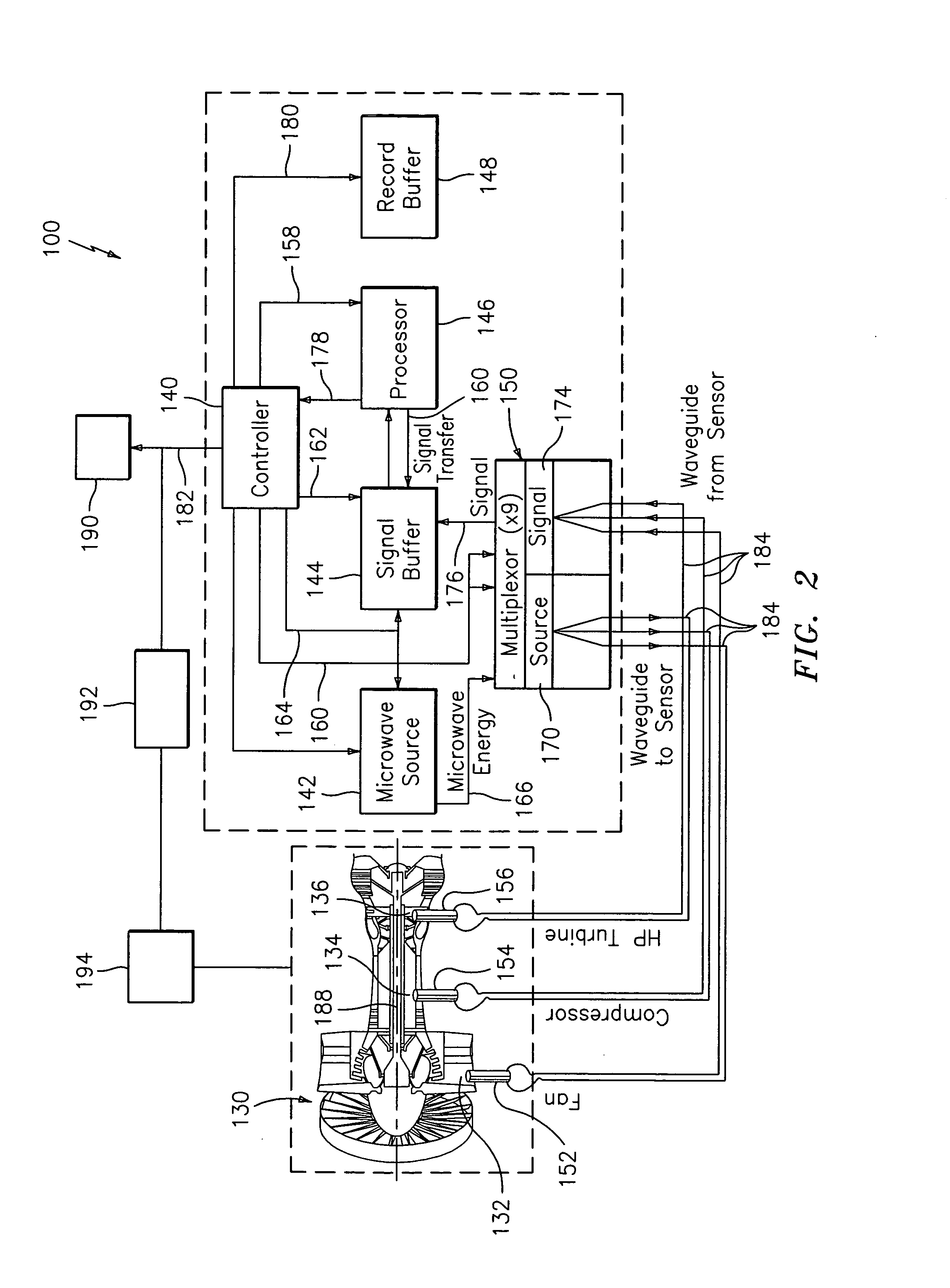Systems and methods for monitoring thermal growth and controlling clearances, and maintaining health of turbo machinery applications
a technology of thermal growth monitoring and control clearance, which is applied in the direction of machines/engines, using reradiation, instruments, etc., can solve the problems of long knowledge and control of radial growth of turbo-machinery components, undesirable situation, lack of reliable, accurate and affordable sensors
- Summary
- Abstract
- Description
- Claims
- Application Information
AI Technical Summary
Benefits of technology
Problems solved by technology
Method used
Image
Examples
Embodiment Construction
[0021] A system and method for determining thermal growth of motor or engine parts to thereupon control the clearance of motor or engine fan blades is disclosed herein. In addition, a system and method for monitoring the health of a turbine engine, its components and sub-components is also described herein. Increasing radial clearances caused by the blade tips rubbing into the outer airseals and / or erosion are common root causes of a loss of engine performance. Early detection of problems with turbo machine blades and / or rotors enables avoidance of component failures. The system(s) and method(s) described herein permit continuous monitoring during the life of the engine for radial clearances and blade and rotor vibration problems, which will assist in correcting and retaining performance for a longer on-wing time in operation. In addition, inconsistent engine-to-engine performance variations due to component tolerances, engine operation characteristics, and operation during extremes...
PUM
 Login to View More
Login to View More Abstract
Description
Claims
Application Information
 Login to View More
Login to View More - R&D
- Intellectual Property
- Life Sciences
- Materials
- Tech Scout
- Unparalleled Data Quality
- Higher Quality Content
- 60% Fewer Hallucinations
Browse by: Latest US Patents, China's latest patents, Technical Efficacy Thesaurus, Application Domain, Technology Topic, Popular Technical Reports.
© 2025 PatSnap. All rights reserved.Legal|Privacy policy|Modern Slavery Act Transparency Statement|Sitemap|About US| Contact US: help@patsnap.com



